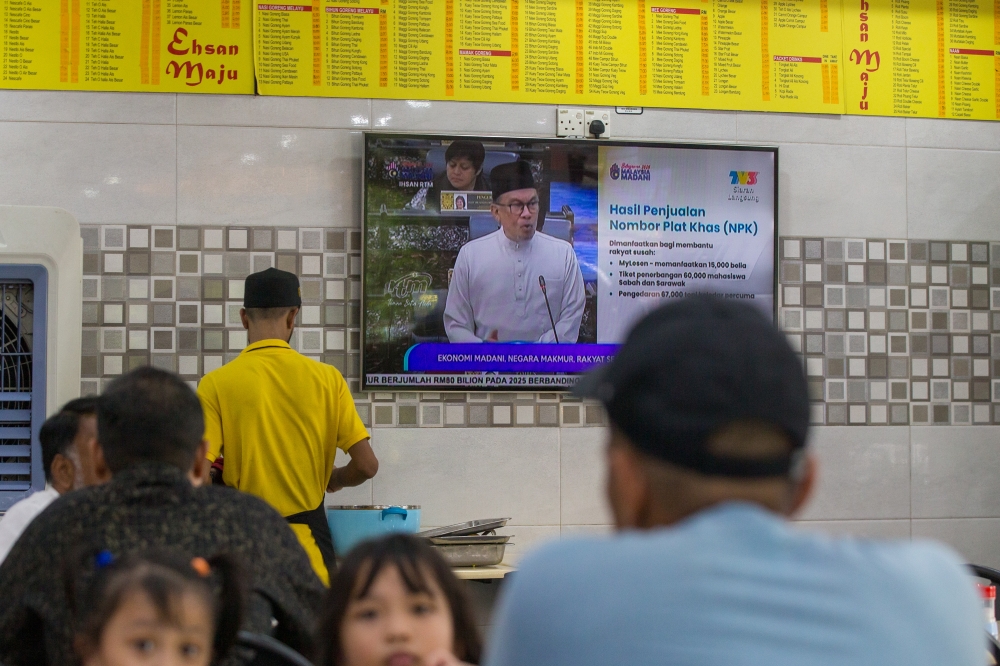OCT 25 — The Malaysian government’s 2025 Budget announcement represents a positive step forward in addressing the welfare needs of the nation.
The allocation of RM13 billion for cash handouts, expansion of the Sumbangan Tunai Rahmah (STR) and Sumbangan Asas Rahmah (SARA) schemes, coupled with the increased cash assistance under Jabatan Kebajikan Masyarakat (JKM), will provide much-needed relief.
While these are undoubtedly positive aspects to the proposed measures, the Malaysian government’s approach remains largely incremental and rooted in an outdated paradigm.
Despite the commendable efforts to expand social assistance programs, the underlying framework continues to prioritise the status quo’s charity model over a life-cycle approach, limiting its effectiveness in addressing the country’s evolving social needs.
A life-cycle approach of social protection provides basic protection to citizens from the cradle to the grave, by recognising the different vulnerabilities faced by individuals in different stages of life such as childhood, maternity, old age, and the risks of disability and orphanhood.
In contrast, the charity model approach is characterised by its narrow focus on targeting poverty which seeks to reserve social assistance to only the “poor”.
It is primarily focused on short-term relief and has been found to exclude large segments of the poor, even in Malaysia.

For instance, despite BR1M’s large coverage of 63.2 per cent of the population in 2018, there was a high exclusion error of 33 per cent for households living in extreme poverty with a monthly income below RM1,000 (UNICEF, 2018).
This year, UNICEF reported that one in three households living in extreme poverty (household income below RM2,000 per month) do not receive STR.
A key concern is the persistent inadequacy of Malaysia’s social safety net which is fundamentally built on this charity model approach.
While the government has announced increased spending on social assistance for 2024, it remains below both regional and income group averages of other countries – this is a consistent trend for the country over the years.
Despite the increase announced in Budget 2025, Malaysia’s expenditure on social assistance as a percentage of GDP is still lower than both the regional average and the average for its income group.
For instance, OECD nations typically spend 10 per cent of GDP in 2022 on cash benefits only – Malaysia’s 2025 allocation of RM13 billion for cash handouts is still far from this.
The focus on poverty-targeted programmes like the Sumbangan Tunai Rahmah (STR) and Sumbangan Asas Rahmah (SARA) also ignores that many households in Malaysia that are not officially classified as “poor” or “B40” struggle to make ends meet.
Households are highly vulnerable to poverty if income shocks such as job losses occur, despite not being officially classified as “poor”.
Khazanah Research Institute in 2021 calculated that if the then PLI of RM2,208 is raised to the relative poverty line by only RM728, poverty would jump up from 5.6 per cent to 16.9 per cent (400,000 to 1.2 million households), implying that around 800,000 households that live just above the PLI are prone to poverty.
Crucially, a study by KRI on Malaysian household consumption reported that only the top 30 per cent exhibit some aspirational traits of more diverse “middle-class” consumption.
Households in the 50 per cent middle income group experience quite similar consumption patterns to the bottom 20 per cent of households, often facing spending constraints and consumption trade-offs, especially if hit by unexpected circumstances.
As KRI highlights, this means that government welfare policies matter to at least the bottom 70 per cent of households, well beyond just the B40 households and those classified officially as poor.
Alongside this, Malaysia is undergoing rapid demographic change, with an ageing population and a declining birth rate.
This shift would usher in significant challenges for the already-strained social protection system. The current system, with its primary focus on short-term relief, would not be equipped to address the long-term needs of an aging population.
While the 2025 Budget offers some positive steps, it falls short of addressing the fundamental shortcomings of Malaysia’s social protection system.
To create a more equitable and sustainable social safety net, the government must shift away from a charity model and adopt a life-cycle approach.
This involves investing in social protection programs that provide comprehensive support throughout individuals’ lives, addressing not only immediate needs but also long-term vulnerabilities.
We cannot keep painting over rust.
* Derek Kok is Senior Research Analyst at the Jeffrey Cheah Institute on Southeast Asia, Sunway University. His research focuses on social protection policies.
** This is the personal opinion of the writer or publication and does not necessarily represent the views of Malay Mail.





















